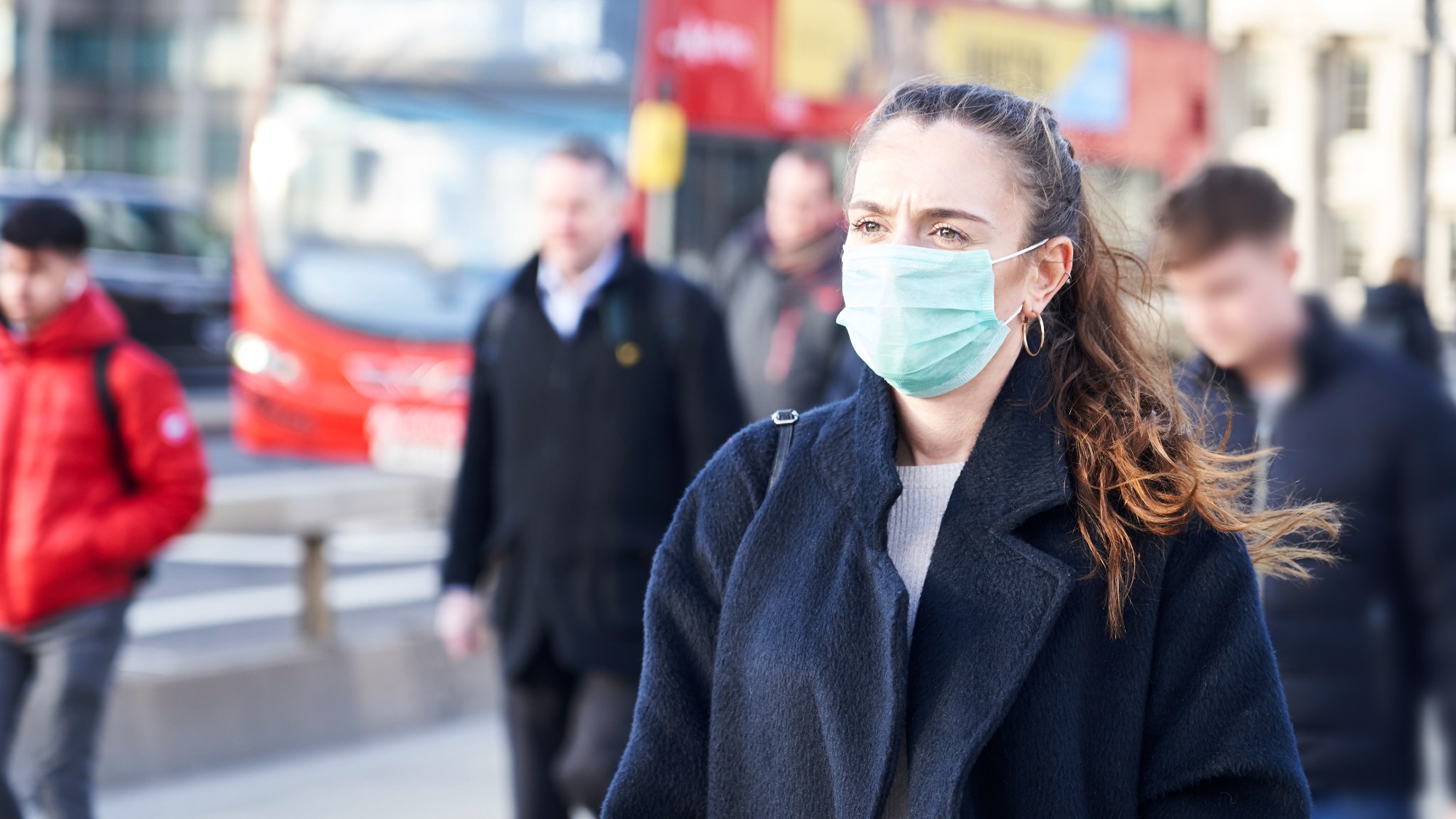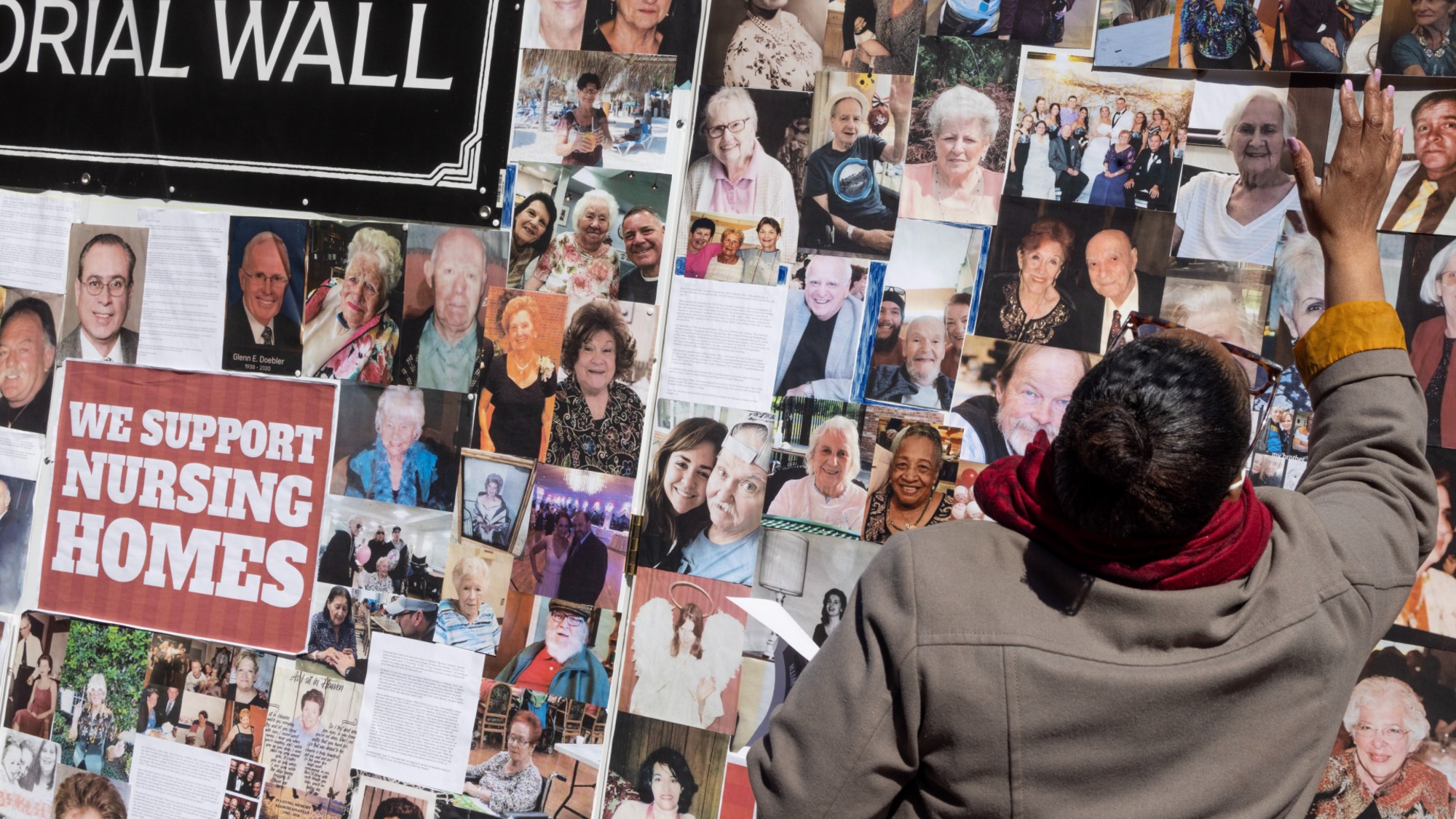Coronavirus: does your homemade mask work?
A medical expert on how and why cloth face coverings help combat the spread of the virus

Simon Kolstoe, senior lecturer in Evidence Based Healthcare at the University of Portsmouth, on the effectivness of homemade face masks.
If a surgeon arrived at the operating theatre wearing a mask they had made that morning from a tea towel, they would probably be sacked. This is because the equipment used for important tasks, such as surgery, must be tested and certified to ensure compliance with specific standards.
But anyone can design and make a face covering to meet new public health requirements for using public transport or going to the shops.
The Week
Escape your echo chamber. Get the facts behind the news, plus analysis from multiple perspectives.

Sign up for The Week's Free Newsletters
From our morning news briefing to a weekly Good News Newsletter, get the best of The Week delivered directly to your inbox.
From our morning news briefing to a weekly Good News Newsletter, get the best of The Week delivered directly to your inbox.
Indeed, arguments about the quality and standard of face coverings underlie recent controversies and explain why many people think they are not effective for protecting against Covid-19. Even the language distinguishes between face masks (which are normally considered as being built to a certain standard) and face coverings that can be almost anything else.
Perhaps the main problem is that, while we know that well-designed face masks have been used effectively for many years as personal protective equipment (PPE), during the Covid-19 outbreak shortages of PPE have made it impractical for the entire population to wear regulated masks and be trained to use them effectively.
As a result, the argument has moved away from wearing face masks for personal protection and towards wearing “face coverings” for public protection. The idea is that despite unregulated face coverings being highly variable, they do, on average, reduce the spread of virus perhaps in a similar way as covering your mouth when you cough.
But given the wide variety of unregulated face coverings that people are now wearing, how do we know which is most effective?
A free daily email with the biggest news stories of the day – and the best features from TheWeek.com
The first thing is to understand what we mean by effective. Given that coronavirus particles are about 0.08 micrometres and the weaves within a typical cloth face covering have gaps about 1,000 times bigger (between 1 and 0.1 millimetres), “effectiveness” does not mean reliably trapping the virus.
Instead, much like covering our mouths when we cough, the aim of wearing cloth coverings is to reduce the distance that your breath spreads away from your body.
The idea is that if you do have Covid-19, depositing any virus you may breathe out on either yourself or nearby (within one metre) is much better than blowing it all over other people or surfaces.
So an effective face covering is not meant to stop the wearer from catching the virus. Although from a personal perspective we might want to protect ourselves, to do so we should be wearing specially designed PPE such as FFP2 (also known as N95) masks. But, as mentioned, by doing so we risk creating mask shortages and potentially putting healthcare workers at risk.
Instead, if you want to avoid catching the virus yourself, the most effective things to do are avoid crowded places by ideally staying at home, don’t touch your face, and wash your hands often.
Two simple tests
If effectiveness for face coverings means preventing our breath travelling too far away from our bodies, how would we go about comparing different designs or materials?
Perhaps the easiest way, as demonstrated by several increasingly shared pictures or videos on social media, is to find someone who “vapes” and film them breathing out the vapour while wearing a face covering. One glance at such a picture dispels any suggestion that these face coverings stop your breath escaping.
Instead, these pictures show that your breath is directed over the top of your head, down onto your chest, and behind you. The breath is also turbulent, meaning that although it does spread out, it doesn’t go far.
In comparison, if you look at a picture of someone not wearing a face covering, you will see that the exhalation goes mostly forward and down, but a significantly further distance than with the face covering.
Such a test is probably ideal for examining different designs and fits. Do coverings that loop around the ears work better than scarves? How far under your chin does a covering need to go? What is the best nose fitting? How do face shields compare to face masks? These are all questions that could be answered using this method.
But, in conducting this experiment, we should appreciate that “vaping” particles are about 0.1 to 3 micrometres – significantly bigger than the virus. While it is probably fair to assume that the smaller virus particles will travel in roughly the same directions as the vaping particles, there is also the chance that they may still go straight forward through the face covering.
To get an idea of how much this might happen, a simple test involving trying to blow out a candle directly in front of the wearer could be tried. Initially, the distance coupled with the strength of exhalation could be investigated, but then face coverings made from different materials and critically with different numbers of layers could be tried.
The design of face covering that made it hardest to divert the candle flame will probably provide the best barrier for projecting the virus forward and through the face covering.
Without any more sophisticated equipment, it would be difficult to conduct any further simple experiments at home. However, combining the above two tests would provide wearers with a good idea about which of their face coverings would work the best if the aim was to avoid breathing potential infection over other people.
Simon Kolstoe, senior lecturer in Evidence Based Healthcare, University of Portsmouth
This article is republished from The Conversation under a Creative Commons license. Read the original article.
-
 Political cartoons for December 18
Political cartoons for December 18Cartoons Thursday’s political cartoons include Susie Wiles under scrutiny, Venezuela's oil, and more
-
 Bengal Tiger at the Baghdad Zoo: ‘funny, profound, must-see theatre’
Bengal Tiger at the Baghdad Zoo: ‘funny, profound, must-see theatre’The Week Recommends Rajiv Joseph’s ‘engrossing’ tragi-comedy about the absurdities of war
-
 Magazine solutions - December 19, 2025
Magazine solutions - December 19, 2025Puzzles and Quizzes Issue - December 19, 2025
-
 Covid-19 mRNA vaccines could help fight cancer
Covid-19 mRNA vaccines could help fight cancerUnder the radar They boost the immune system
-
 The new Stratus Covid strain – and why it’s on the rise
The new Stratus Covid strain – and why it’s on the riseThe Explainer ‘No evidence’ new variant is more dangerous or that vaccines won’t work against it, say UK health experts
-
 RFK Jr. vaccine panel advises restricting MMRV shot
RFK Jr. vaccine panel advises restricting MMRV shotSpeed Read The committee voted to restrict access to a childhood vaccine against chickenpox
-
 RFK Jr. scraps Covid shots for pregnant women, kids
RFK Jr. scraps Covid shots for pregnant women, kidsSpeed Read The Health Secretary announced a policy change without informing CDC officials
-
 New FDA chiefs limit Covid-19 shots to elderly, sick
New FDA chiefs limit Covid-19 shots to elderly, sickspeed read The FDA set stricter approval standards for booster shots
-
 RFK Jr.: A new plan for sabotaging vaccines
RFK Jr.: A new plan for sabotaging vaccinesFeature The Health Secretary announced changes to vaccine testing and asks Americans to 'do your own research'
-
 Five years on: How Covid changed everything
Five years on: How Covid changed everythingFeature We seem to have collectively forgotten Covid’s horrors, but they have completely reshaped politics
-
 HMPV is spreading in China but there's no need to worry
HMPV is spreading in China but there's no need to worryThe Explainer Respiratory illness is common in winter